Inside Piedmont’s vintage of extremes
As the 2023 harvest gets underway in Piedmont, producers from the region reflect on how extreme weather has presented difficulties this growing season.

Italy, and its wine industry, is feeling the force of climate change.
From devastating floods in Emilia-Romagna to scorching temperatures in Sicily, the 2023 growing season is one that has been marked by extremes across the country.
One region that has seldom made the headlines for its climate is Piedmont. Though cushioned by the Alps, the home of Barolo, Barbaresco, Barbera d’Asti and many other famed wines has still had its fair share of extreme weather in recent months.
August saw Piedmont hit by hail and heavy rain, but also undergo prolonged periods of heat and drought, such as it did last year, with temperatures in Turin climbing into the high thirties.
Speaking to leading figures in the region’s wine industry, it seems that the heat and storms have made the 2023 vintage a difficult one to call.
Asti ahead of schedule
As the Moscato harvest commenced on 24 August, db spent the day with Giacomo Pondini, director of the Consorzio dell’Asti e del Moscato d’Asti DOCG.
Surveying the parched hills of Asti, Pondini lamented that Piedmont has not “felt the urgency” to deal with water shortages.
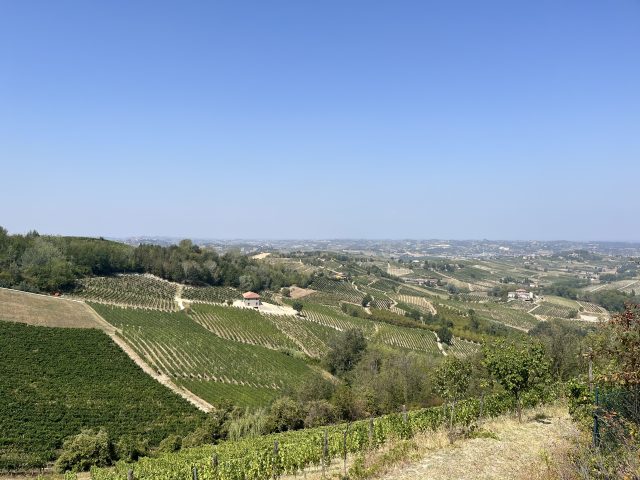
Piedmont’s predicament lies in the fact that while the Po may be topped up with Alpine meltwater, it has been a surprisingly dry region in recent years.
“Even if there was irrigation,” Pondini argued, “there’s nowhere to get water from. Some growers are calling for artificial lakes. In sandier areas, the soil doesn’t hold onto the water.”
Stefano Ricagno, director at sparkling wine producer Cuvage, shared that the high temperatures in the week before picking began meant that some of the Moscato grapes were looking slightly dry. It was later revealed that berry weight for this vintage is about 20% less than usual.
Despite this, yields are good overall and production is expected to be in line with previous years, with the 2023 harvesting producing around 750,000 hectolitres, or 100 million standard 75 centilitre bottles.
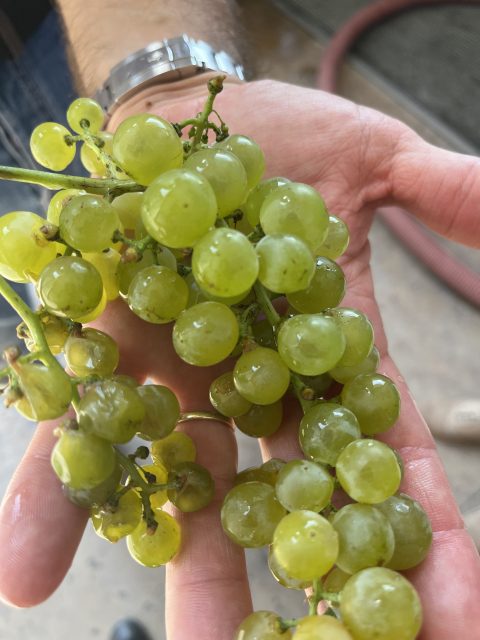
The high temperatures of this summer have also seen the continuation of an alarming trend which has been seen across Europe. In the last decade, the beginning of the Moscato harvest has shifted from early September to late August.
This dramatic change poses the question of what climate change means for the distinct aromatic profile of Moscato d’Asti and Asti Spumante.
A visit to the Consorzio’s laboratory, which recently received a €300,000 upgrade, shed further light on what hotter temperatures and less water mean for Moscato.
Agronomist Daniele Eberle said: “Prosecco and Trento DOC have a lot of water. It is not the same in Piedmont.”
Eberle revealed that whereas Casarsa vine training, a system popular in Veneto involving the foliage being supported by wires above the vine, was utilised 20-30 years ago in Asti, it has fallen out of favour as there is insufficient water to support such vigour.
“This year it has not rained much, so we have not had much mildew,” Eberle shared. “There was a lot of hail in early July and some in August, and some major damage.”
As for anti-hail measures, Eberle advocated for nets, which cost about €5,000 per hectare (a price more than covered by the grapes saved, he suggested), and insurance.
In order to ensure that the Moscato is developing well, despite harvests getting earlier and earlier, the laboratory regularly analyses grape samples from 40-50 vineyards spread across Asti DOCG’s nearly 10,000 hectares of vines to assess sugar (one of the hallmarks of the wines is their residual sugar), pH (to balance said sugar), and, using gas chromatography, aroma. With the latter, the key compounds are terpenes, which give members of the Moscato/Muscat family of grapes their signature floral fragrance. The resulting data from the laboratory analysis offers a blueprint of the wine that can be made.
For producers of wines made from Asti’s other famous variety, Eberle explained that there have been advantages: “20 years ago we used to add rectified concentrated grape must (RCGM) to the Barbera, but we don’t need to anymore, it gets fully ripened. Climate change is a big chance for Barbera.”
A spot of bother in Barolo?
One area of Piedmont where there has been plenty of rain in the last couple of weeks, and the problems that come with it, is Langhe.
Speaking to db a week ago, Barbara Sandrone, second-generation owner of celebrated Barolo producer Sandrone, explained that its Dolcetto is typically harvested first: “Last week [late August], I talked with Luca [Barbara’s uncle and the company’s agronomist] and he said he had to get the team ready for harvesting – but with the sudden cold weather, it was postponed.”
Partner Content
That cold snap was accompanied by a downpour – indeed, when db visited Sandrone’s facility in Barolo, there had been some minor flooding in the cellar that morning.
“The problem we may have Dolcetto is that it is very sensitive to temperature variation,” Sandrone explained. “When it happens, the berries can fall off the bunch, so instead of picking them from the vine we could be picking them off the ground!”
Sandrone also shared that during a hotter period the week prior, Luca had noticed some of the Dolcetto berries were beginning to shrivel as the vine took what water there was for itself.
Fortunately, while Dolcetto may present some difficulties, Nebbiolo, as Sandrone uses for its revered Barolo expressions as well as its Valmaggiore Nebbiolo d’Alba, is in a “safe position”.
“It’s very robust, being thick skinned and late ripening. With this recent cold weather we could keep more acidity, which is quite positive. We have faith: there have been some challenging moments with heat and humidity, but the last few weeks are the most important.”
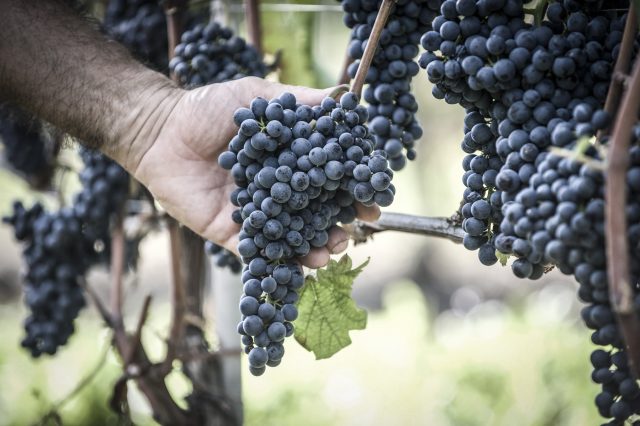
In fact, Sandrone suggested that Nebbiolo wines, and Barolo in particular, benefit from cooler conditions: “I’m not convinced that heat is good for Nebbiolo – it’s a grape for cold weather.”
Nebbiolo is typically harvested in October.
“For Barolo, we need that foggy period in the night,” Sandrone stated. Indeed, the name ‘Nebbiolo’ is derived from ‘nebbia’, meaning fog, a reference to either the fogginess of Langhe, or the white bloom on the grapes.
Citing the 2014 vintage, when August temperatures dropped to around the 15°C mark, Sandrone suggested that Barolo from cooler vintages take time to “reveal their power”, but that the elegance and ageing potential of wines from such years is noteworthy.
But Sandrone warned that complacency is not an option, despite the quality of recent vintages: “So far, there’s no irrigation allowed – but soon the Consorzio [Barolo e Barbaresco] will allow us to water vines – the problem is where do we get the water from? There’s less snow on the peaks, meaning less water in the rivers. We have always talked about climate change, but not as dramatically as this. In the last two to three years the microclimate of the region has changed completely.”
All good in Gavi
When db visited Broglia in Gavi DOCG in early August for a vertical tasting, co-owner Roberto Broglia said: “We had good rains during the spring and a good diurnal range.”
Speaking to db last Thursday (31 August), Broglia’s optimism remained high: “The grapes are looking really healthy. We had around 60-70mm of rain over two days last week and great temperature variation between day and night.”
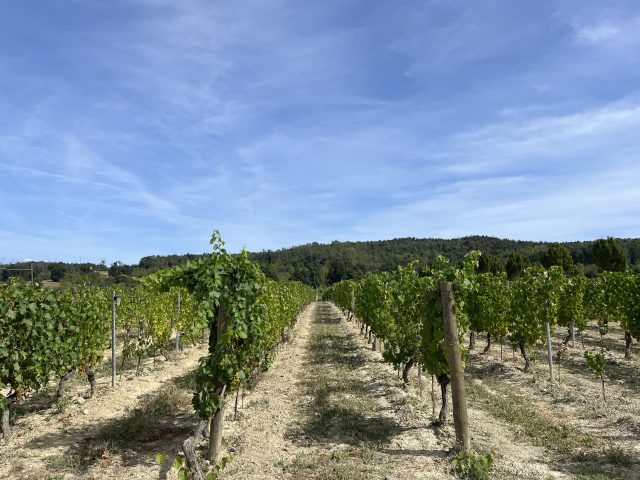
Cortese is, as Broglia revealed, the last white grape variety in Piedmont to be picked. This year, it is anticipated that harvesting will begin between 15 and 20 September.
But though the vines have been hardy and benefitted from some late rainfall, the local population has had a somewhat tougher time. In the town of Novi Ligure, near Gavi, the water shortage was so severe during this writer’s visit that the local cafés had to take the drastic step to not serve espresso.
Alta Langa remains above it all
Alta Langa, the high altitude region famed for its production of metodo classico sparkling, appears to have largely been unaffected by the worst of the summer weather.
Luca Cigliuti, export manager at La Spinetta and famed Alta Langa producer Contratto (both of which are under the same ownership), explained to db why heading uphill has helped Contratto in the face of climate change: “Contratto took the decision many years ago to plant at high altitudes – with Bossolasco being around 800 metres above sea level.”
These cooler conditions help Contratto to cultivate fruit with a relatively low sugar concentration and fairly high acidity – the ideal base wine for its sparkling. Harvesting of the Pinot Noir and Chardonnay used to make Contratto’s pas dosé fizz begins today (4 September).
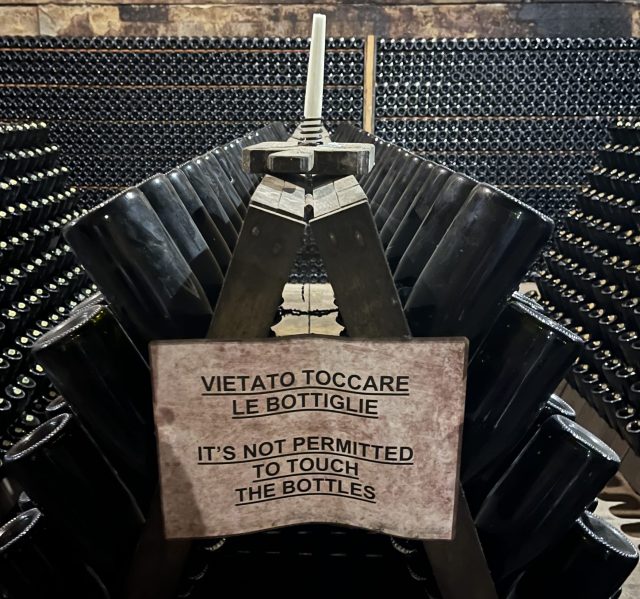
“For us, it’s been a great season,” Cigliuti shared. “We have not been hit by hail, and thanks to the rain we have super healthy fruit in the vineyards. We are convinced that 2023 will be a very good vintage for Alta Langa.”
Contratto has also had hail nets since 2014, which, Cigliuti, noted, also go some way to preventing the grapes from becoming sunburnt.
Despite irrigation only being permitted in “emergencies”, a lack of water has not been a concern for Contratto: “We have cover cropped the vineyards for a long time, and that helps the soil to retain water.”
Of course, high altitude agriculture can bring its own problems, particularly frost, but Cigliuti suggested that this is more of a problem at the bottom of the valleys, not up high where the wind keeps the vines ventilated. He did share that Chardonnay is slightly less hardy when blown with cold winds, and so is typically planted in more sheltered plots.
But, the cooler conditions have presented some difficulties. “This year fruit set lasted for too long because it was too chilly,” Cigliuti revealed. “Between flowering and fruit set, we lost about 20 to 25% of the grapes.”
Indeed, Cigliuti argued that a generally warming climate is arguably good news for Alta Langa producers: “The higher temperatures of the last three years have delivered benefits – mainly when it comes to ripening.”
Not a done deal
While the general expectation seems to be for a vintage of quality over quantity, the harvest is still in its early days, there may be another twist of the knife in store for Piedmont’s producers. Likewise, it is clear that there are mixed views as to what rising temperatures mean for the long-term future of region’s wines – only time will tell, but it’s clear that, as is the way with wine, everyone in the industry has one eye on this vintage and another on the next. As Sandrone put it: “Since we live under the sky, everything can change dramatically!”
Related news
Behind the label: Alto Adige and the question of language




